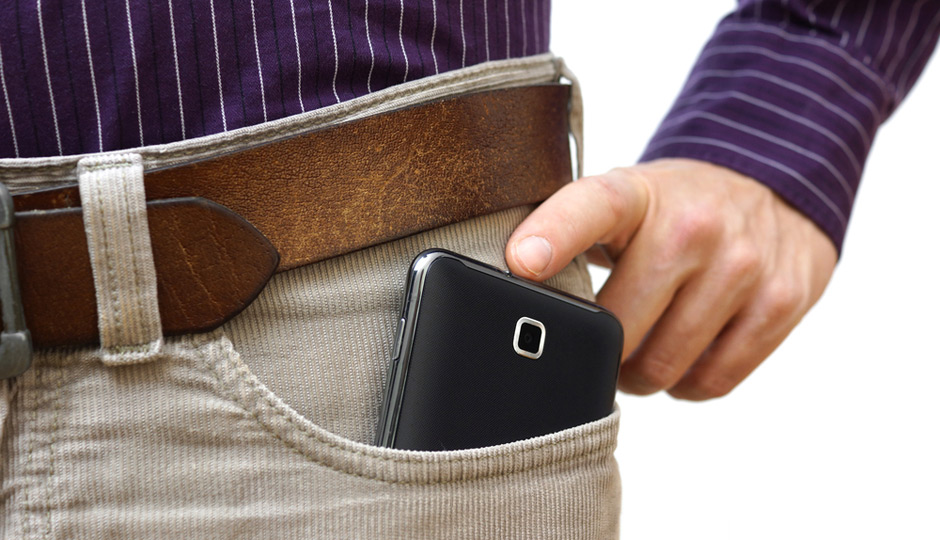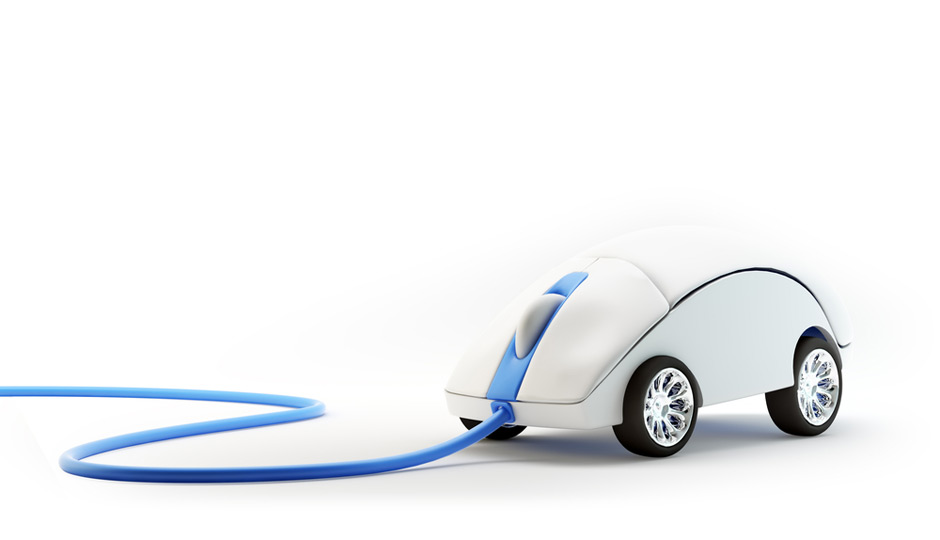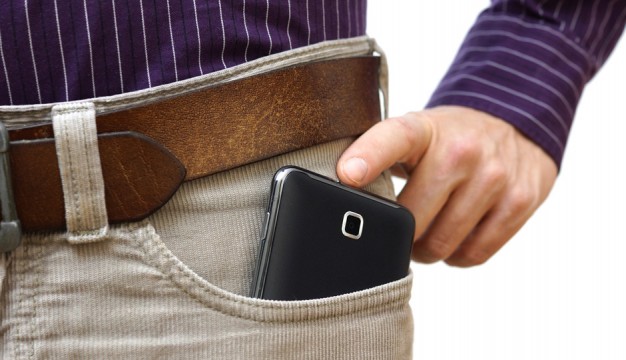The Six Biggest Tech Trends of 2014
Every year in January — after they’ve shaken off the holiday hangovers and said goodbye to the in-laws — thousands of technology professionals, application developers, engineers and assorted tech geeks descend on Las Vegas for a glimpse at the next wave of consumer tech innovation.
Hosted by the Consumer Electronics Association since the 1960s, the International CES, which begins next Tuesday, is like the Super Bowl of high-tech gadgetry — if the Super Bowl lasted for five days; included super sessions from the biggest names in entertainment, media and technology; and featured daily Les Paul guitar jams hosted by Gibson.
This year, scattered among the 3D TVs , tablet computers and portable gaming consoles, attendees will discover a host of new and exciting devices and applications designed to make their lives easier, or at least more exciting. But that’s just the tip of the iceberg of what’s to come. With a smartphone in the hands of nearly two-thirds of Americans and tech-savvy consumers demanding real-time, interactive engagement, 2014 promises to be a breakthrough year for emerging technology. Here’s a preview of the tech trends you can expect to hear more about this year.
The Internet of Things
In case you haven’t noticed, humans no longer have a monopoly on Internet traffic. So called machine-to-machine, or M2M, traffic — which refers to data transfers between networked “smart” devices — is forecast to grow more than 20-fold through 2016 and will account for more than a quarter of all mobile data traffic. The driving force behind this so-called “Internet of things” is a rise in consumer demand for intuitive appliances and devices that will do their thinking for them.
Cisco Systems — which will be spotlighting its IoT technology at International CES — predicts that by the end of the decade there will be 50 billion connected devices, including everything from door locks and home appliances to cars and medical implants.
Homeowners can now rely on connected home solutions such as AT&T’s Digital Life platform to adjust their thermostats, unlock their doors and remotely monitor live video of their house while on the go using their smartphone.
Companies including GE and Whirlpool are marketing smart appliances that can tell you when the milk in your refrigerator has gone bad, and using the Satis connected toilet you can even track your bowel movements via an Android app.
There’s even a connected car seat that gives parents driving with young children the equivalent of eyes in the back of their head The iAlert seat includes a temperature gauge and an embedded sensor that notifies parents via a mobile app if their child leaves the seat or is left unattended.
4K video
This week Samsung began taking orders for the Rolls Royce of televisions, a 110-inch behemoth with a price tag higher than some Philly row homes ($152,000) that sports ultra-high definition 4K resolution (four times the pixels of regular hi-def TVs). That’s as close to movie theater quality as you can get without waiting in line for a ticket.
Analysts forecast that 12.7 million 4K Ultra HD televisions will be shipped worldwide in 2014 and will be in 5 percent of North American homes in four years. But don’t worry; determined early adopters won’t necessarily have to break the bank to get one. Samsung also has an entry level 55-inch model for under $3,000, and there are a handful of Chinese 4K TVs that cost less than a grand.
But having 4K compatible hardware won’t get you much without the content to view on it. To date, a lack of available 4K content has kept sales of ultra-high definition TVs to a minimum, but that will change this year as more content providers take the plunge into ultra-high def. Sony now sells an Ultra HD Media Player, which lets users download select 4K movies for viewing on the company’s TVs. Netflix will introduce its 4K Ultra HD offering with the second season of its original House of Cards series, which begins in February; and Amazon announced that it will begin producing all of its original content in ultra-high def.
Biometrics
In 2014, technologies that seem right out of Q’s lab will find new applications in the commercial and consumer sectors. Indeed, the next time you board a plane you may be asked for your eyeball instead of your passport.
Airports in several countries, including the U.S., are piloting programs that replace human personnel with automated security measures that rely on iris and fingerprint-scanning technology to pre-flight check-in procedures. In some libraries, patrons can check out books by scanning their palms. Vascular (vein) patterns and voice recognition are also being used to authenticate user identities by banks – for ATM withdrawals, for instance; and researchers in Japan have developed a theft-preventing car seat that can identify a car owner by his ass with 98 percent accuracy.
In the consumer market, more smartphones will become equipped with fingerprint scanners in 2014, as debuted in the new iPhone 5s. Given what we now know about the NSA, that may give some consumers pause, and it probably should. Apple says all biometric information in the iPhone 5s is stored on the phone’s internal chip, and therefore not databased; but with more industries employing biometric identification, it’s only a matter of time before hackers are a click away from accessing data as personal as the size of your rump.
Wearable Devices
Google Glass may have generated a lot of hype last year, but let’s face it, having a computer strapped to your head isn’t exactly the most practical way to introduce wearable computing into your life. Lucky for us companies are pioneering a whole slew of less conspicuous wearable electronics that are actually designed to do some pretty cool things.
AT&T is marketing a GPS-enabled “FiLIP” smartwatch, which lets parents keep track of kids even when they are out of sight. The FiLIP includes a “safe zone” feature that alerts parents when their children breach the boundaries of a designated area (kind of like an invisible dog fence minus the shock).
Other companies are thinking bigger. A startup called Melon raised nearly $300,000 on Kickstarter to develop and market a smart headband with an embedded electroencephalography (EEG) sensor and a companion app designed to help wearers improve their mental focus.
Analysts say the most aggressive wearables marketing will be targeted at fitness enthusiasts on the quest for the “quantified self.” A full third of smartphone owners are expected to use some type of mobile health application by 2015, and companies like Nike, Jawbone, Misfit and AiQ Smart Clothing are racing to embed sensors that monitor vital signs such as heart beat, blood pressure, temperature and even perspiration in everything from hats to shoes.

Photo | Shutterstock.com
Phablets
When it comes to smartphones, bigger may indeed be better — or at least more popular — in 2014. Smartphones touting bigger touch screens, those 5 inches or larger, accounted for 22 percent of global smartphone shipments last quarter, according to a recent report, and are expected to take off this year. Bob O’Donnell, the founder of Technalysis Research, believes the devices — known colloquially as “phablets” — will surpass traditional tablets in overall sales this year.
“I thought phablets were ridiculous at first,” O’Donnell recently told Forbes. “How could you hold one to your ear to make a call? But over time, they grow on you.”
It’s easy to see why. Of all the things consumers now do on their smartphones, making phone calls ranks low on the list, and larger screens are better for viewing mobile video content, gaming and texting. There’s no shortage of phablets already on the market, and more will join them this year. Just before Christmas, Hewlett Packard — which has taken a hit in the PC sector — announced it was placing its bets on phablets to put it back in the mobile game. Even Apple is expected to get in the game in 2014.

Photo | Shutterstock.com
Connected Cars
The information superhighway is beginning to merge with the real one, with a new generation of connected cars making it possible to search the Internet, make phone calls and upgrade in-vehicle software, all without leaving the driver’s seat. Last year, a quarter of cars sold in the U.S. featured embedded cellular technology, and analysts say sales of in-car connectivity solutions will increase 41% over the next five years.
Experts say the challenge is now on developers to create the applications that will benefit from the connected-car revolution. Vendors such as Parkopedia and Abalta Technologies are pushing software to help drivers find a parking space or enjoy safe infotainment options while behind the wheel.
IBM predicts that the proliferation of connected cars and embedded sensor technology will help urban planners significantly reduce traffic congestion by responding in real time to things like accidents and weather events. The trend is drawing attention from some of the biggest names in tech, with Google and Microsoft busy forging deals in the automotive sector in an effort to stake their claim in what promises to be a multi-billion dollar industry.
Follow @CMoraff on Twitter.



